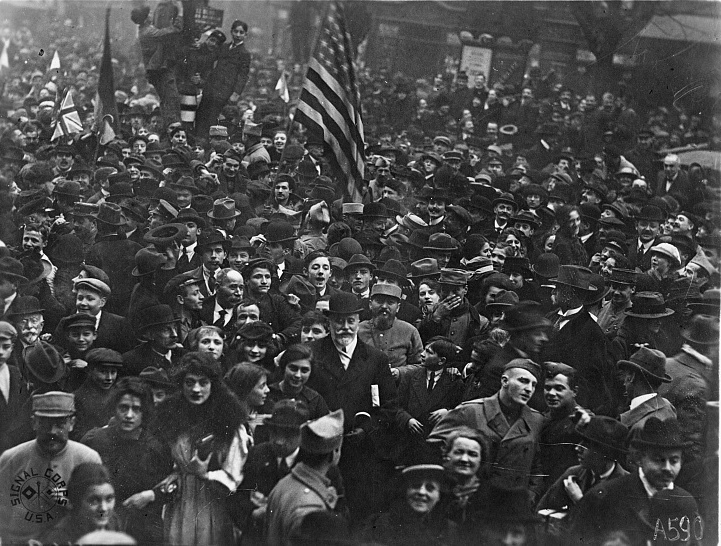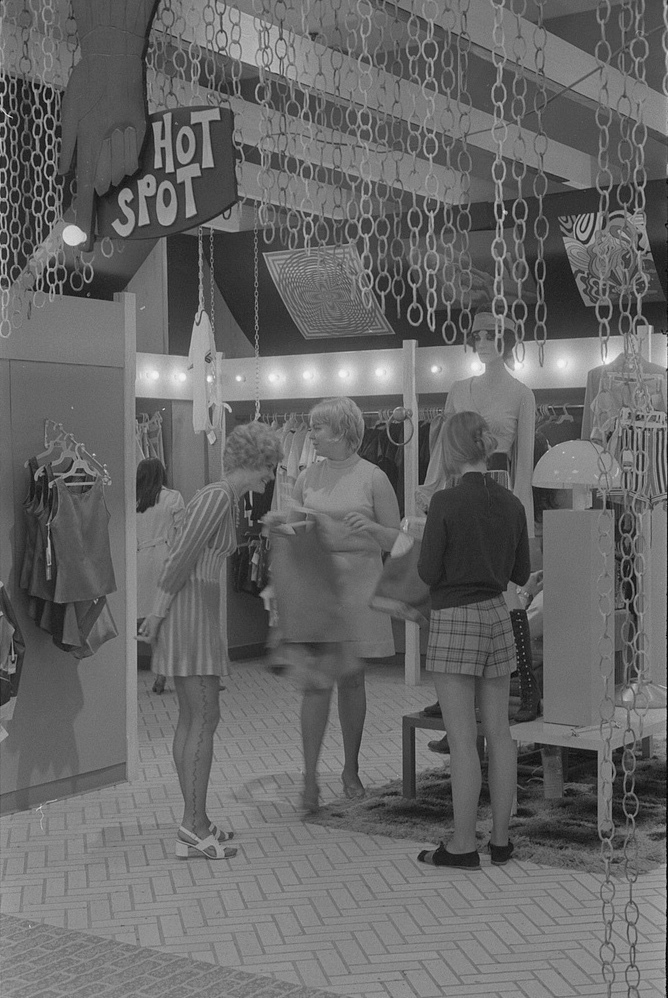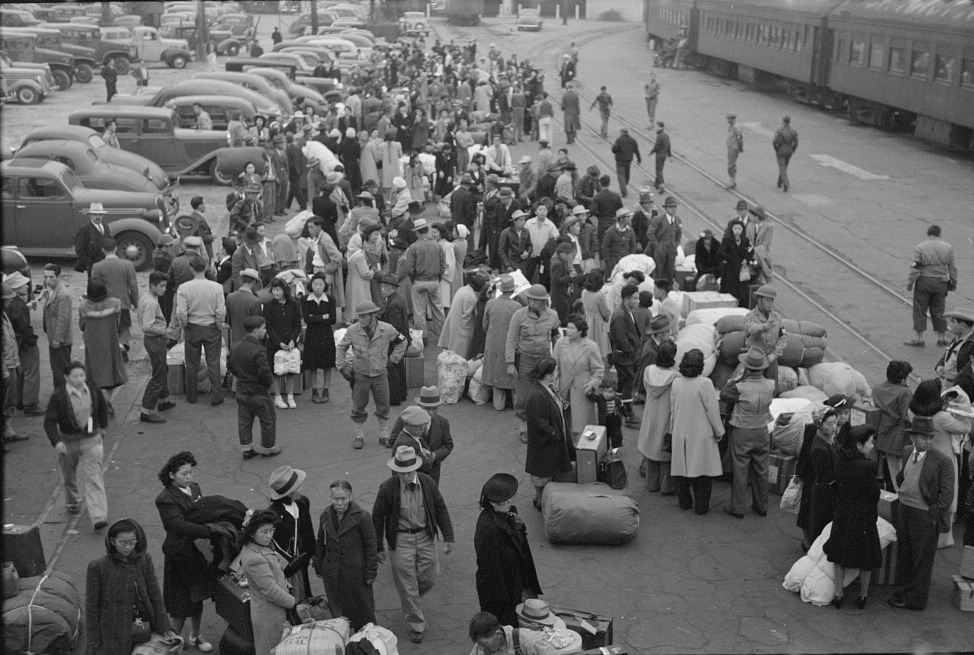Old Photos
-
Caption from Catalogue of Official A.E.F. photographs taken by the Signal Corps, U.S.A., 1919. ↩︎
-
Photo by the United States Army Signal Corps, November 11, 1918, via Library of Congress, https://www.loc.gov/pictures/item/2017666571/. ↩︎
- "Protect your hands! You work with them," poster (silkscreen) by Robert Muchley for the Federal Art Project, WPA, Pennsylvania, 1936. Repository: Library of Congress PPOC, https://www.loc.gov/pictures/item/98518513/.
- "Be careful near machinery," poster (woodblock) by Robert Lachenmann for the Federal Art Project, WPA, Pennsylvania, ca. 1936–1940. Repository: Library of Congress PPOC, https://www.loc.gov/pictures/item/98518717/.
- "Work with care," poster (woodcut) by Robert Muchley for the Federal Art Project, WPA, Pennsylvania, 1936 or 1937. Repository: Library of Congress PPOC, https://www.loc.gov/pictures/item/92517365/.
- "Failure here may mean death below – safety first," poster (woodcut) by Allan Nase for the Federal Art Project, WPA, Pennsylvania, 1936 or 1937. Repository: Library of Congress PPOC, https://www.loc.gov/pictures/item/98518429/.
- "Backyards, Baltimore, Maryland," black and white photograph by Dick Sheldon for the Farm Security Administration, July 1938. Repository: The New York Public Library Digital Collections, https://digitalcollections.nypl.org/items/ba309cea-94b2-4288-e040-e00a18066c61
Europe's Changing Map in 1939 (Photo)

European situation spoils map on Post Office department floor. Washington, D.C., April 12. The huge map on the floor of the Post Office Department here is all out of kilter these days due to the aggression in Europe. Many are the embarrassing questions being asked officials about when Mr. Farley is going to do something about Ethiopia, Austria and Czechoslovakia. The answer so far has been - nothing. Probably the Post Office is waiting to see what will happen next on the continent. Miss Edna Strain is inspecting the damage done by the ambitious dictators. 4-12-39
Image and caption: Harris & Ewing Collection, Library of Congress, https://www.loc.gov/pictures/item/2016875385/.
Shopping in Northern Virginia: Photos from 1967, 1971, and 1976

Tysons Corner Mall, Tysons Corner, Virginia, on April 12, 1976.
Source: Library of Congress, U.S. News & World Report Magazine Photograph Collection, https://www.loc.gov/pictures/item/2024640738, …/2011646503, and …/2024630362.
Japanese-American Internment as 'Evacuation' and 'Relocation'
These photos of Japanese-Americans and a few resident aliens on their way to internment for the duration of World War II are accompanied by captions that avoid the language of imprisonment or confinement. Instead of internment, there is talk of “evacuation” and the War Relocation Authority.
These pictures also suggest what a rupture the location of their internment would represent. It is hard to imagine these urbanites stepping out into the barely settled terrain they were headed to, even if an advanced party of men without dependents was sent out a few weeks in advance to prepare for the others' arrival.
"Los Angeles, California. The evacuation of the Japanese-Americans from West Coast areas under U.S. Army war emergency order. Japanese-American children waiting for a train to take them and their parents to Owens Valley." Photo taken in April 1942 by Russell Lee.
“Los Angeles, California. The evacuation of the Japanese-Americans from West Coast areas under U.S. Army war emergency order. Japanese-Americans and a few alien Japanese waiting for a train which will take them to Owens Valley.” Photo taken in April 1942 by Russell Lee.
“Los Angeles, California. The evacuation of Japanese-Americans from West coast areas under United States Army war emergency order. The Japanese referred to in this sign were an advance group going to Owens Valley for construction work.” Photo taken in April 1942 by Russell Lee.

“Manzanar, Calif. Apr. 1942. Construction beginning at the War Relocation Authority center for evacuees of Japanese ancestry, in Owens Valley. Mt. Whitney, loftiest peak in the United States, appears in the background.” Photo by Clem Albers.
Source: Library of Congress: Farm Security Administration / Office of War Information Photograph Collection, https://www.loc.gov/pictures/item/2017744879, …/2017744872, …/2017817916, and …/2021647198.
Photo from the first Armistice Day in Paris
“When the news became generally known that the armistice had been signed, the crowd went wild . . ."1

“Paris. Impromptu parades took place in Paris on Armistice Day, November 11th, 1918. Here are American soldiers pushing their way through the great crowds at the Church of the Madeleine, Paris. They are forcing their way towards Place de la Concorde down Rue Royale."2
Wealthy 'Criminally Insane' Playboy Posing with Captors (ca. 1913–14)
Sometimes the world loves a notorious, wealthy, narcissistic, sociopathic, murdering playboy sadist. This one was Harry K. Thaw, seen here posing in chummy fashion with Canadian police and immigration officers around the time of his escape from the Matteawan State Hospital for the Criminally Insane in New York. What a strange photo!
Credit: Library of Congress, New York World-Telegram and the Sun Newspaper Photograph Collection, ca. 1913–14, https://www.loc.gov/pictures/item/2017648770/.
Photo of “African American demonstrators outside the White House, with signs ‘We demand the right to vote, everywhere’ and signs protesting police brutality against civil rights demonstrators in Selma, Alabama” by Warren K. Leffler, March 12, 1965. Source: U.S. News & World Report Magazine Photograph Collection, Library of Congress, https://www.loc.gov/pictures/item/2014645538/.
"Two U.S. Navy sailors browsing library shelf labeled 'Negro Books'" – U.S. Navy Department, Office of Public Relations, ca. 1944-49.
To scrutinize the titles in this image, download a high resolution scan from the NYPL Digital Collections.
W. E. B. Dubois, The Souls of Black Folk (1903) is clearly visible. Also: Charles S. Johnson, Patterns of Negro Segregation (1943) and Louis Adamic, The Native's Return (1934).
Repository: Schomburg Center for Research in Black Culture, The New York Public Library Digital Collections, https://digitalcollections.nypl.org/items/22e61340-6379-013b-2df1-0242ac110003.
Follow-up remarks: Revisiting Image of Two Back Sailors Browsing Books (Sept. 7, 2024)
Related post: Reading about Black Librarians and Knowledge Formation (June 19, 2024)
Workplace Safety Posters, ca. 1936–40
I am enjoying Depression-era workplace safety posters from the Works Progress Administration (WPA). They evoke a time when the power of government was effectively leveraged for good. If you live in the United States, there is a good chance you’ve encountered WPA building and infrastructure projects. One WPA program was the Federal Arts Project, which put artists to work. To get a feel for the diversity of programs this art supported, see the Library of Congress’s online collection.
Unfortunately, the WPA also built and helped staff internment camps for Americans of Japanese descent after the Pearl Harbor attack in 1941. This part of the story underlines the negative potential of government power when racism shapes policy.
Besides the four posters that follow this text, I include a photograph of an alley behind a row of houses with tiny back yards in Baltimore. If you look closely at this image from the Farm Security Administration, you can see a WPA poster attached to an open door in the bottom left-hand corner. It is captioned “Stop accidents before they stop you.” The building itself appears to be part of a factory of some kind because only a door and a single big wall with windows is visible, visually distinct from the opposite side of the alley, where all the little houses are.
These posters remind me of the ongoing importance of government for writing, publicizing, and enforcing workplace safety regulations. They connect past concerns about workplace conditions to countless reports of workplace injuries and sickness in our own time. They also link to family stories past and present, whether handed down or forgotten, whether taught or ignored in schools, workplaces, and union gatherings.
My grandmother’s father was killed in an avoidable industrial accident in 1917 when she was six years old. The lathe he operated in a Cleveland factory had no safety guard, and then his luck ran out. He left behind six children and their mother, the oldest of them able to work. The sudden loss of this man represented a trauma that no one talked about in my childhood, and I only learned the barebones details from my mother this past year.
I often wonder if and how such trauma is passed down in other families, and why its causes are silenced or not. My mind goes there because I imagine that millions of Americans—from across the political spectrum—come from families with such experiences, even if these were not handed down from the past. And I wonder what, if anything, knowledge about these many pasts might do to change their attitudes today.
This thought ties in with the employers and politicians who fight government regulations and workers' collective bargaining. They strive to steal workers' freedom and dignity, all in the name of their own freedom. Part of this effort benefits from or fosters processes of families and communities forgetting or diminishing the significance of the workplace struggles and traumas in their own pasts.
Fortunately, good governance and organized labor seem to be making a comeback.





Waging War with Factories

Production. B-17F heavy bomber. Working on the roof of a B-17F (Flying Fortress) bomber swung over on its side in the Boeing plant at Seattle. A turret will be mounted over the large circular opening. The Flying Fortress, a four-engine heavy bomber capable of flying at high altitudes, has performed with great credit in the South Pacific, over Germany and elsewhere.
– Andreas Feininger, December 1942, United States, Office of War Information, Library of Congress
The library has a large collection of photos showing the manufacture of B-17 bombers under the subject heading United States–Washington–King County–Seattle.
Consumption History Again
Park & Shop Shopping Center, Connecticut Ave. NW, Washington, DC, via Library of Congress.
Yesterday I asked how I could integrate the consumption history I’m learning into my teaching, and I pointed to a couple examples where it’s already there. But I missed a glaringly obvious one: the Great War.
Consumption is a vital part of the story in Gerald Feldman’s classic Army, Industry, and Labor in Germany, 1914—1918 (1966), insofar as the purchasing power of labor was inextricably linked to Germany’s social and political stability and, therefore, the country’s ability to produce sufficient armaments to continue fighting. The point is more accessible in Roger Chickering, Imperial Germany and the Great War, 1914—1918 (1998 and 2004), which I have used in a course on the Great War and will use again next fall in one on modern Germany. There is also Belinda Davis, Home Fires Burning: Food, Politics, and Everyday Life in World War I Berlin (2000), which I will be using in a graduate course on war and society this summer.
I also usually bring up a much earlier aspect of consumption history when I address the Enlightenment and the public sphere: coffee houses. To make this point, there is a delightful reading from before the Enlightenment on the Internet Modern History Sourcebook: “The First English Coffee-Houses, c. 1670—1675.”
Of course, none of this is informed by a specific historiography of consumption history, but it does point out how this topic is already in my teaching. But there’s a difference between including a topic and addressing it systematically. To think about war and society in Europe, I can at least draw on the periodizing nomenclature of “cabinet war,” “people’s war,” and “total war” to help describe the level of societal involvement in interstate conflicts over the past few centuries (Stig Förster et al.). If such language and periodization exists for understanding consumption history, I have not yet learned it.
Perhaps the main point is to recognize modern consumer societies as having a history in the first place, instead of taking them as a direct reflection of human nature and, hence, rendering them ahistorical, as too often happens in simplistic political rhetoric that opposes capitalism and communism—rhetoric that invariably finds its way into student spoken and written comments. I sometimes try to do this with economic thought in the early modern period, but historicizing capitalism should be a central historiographical problem for the modern era, too.






















